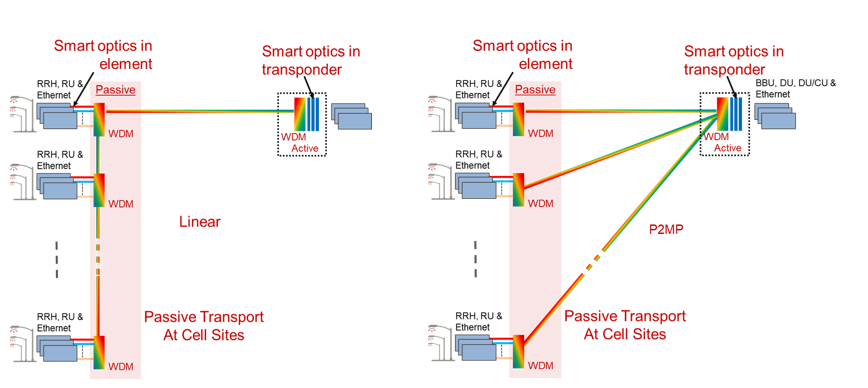As 5G adoption quickly accelerates, small cell deployments likewise are growing in popularity. These low-power radios in a compact form factor are used to complement macro cell sites by improving indoor/outdoor coverage and network capacity. Unlike macro cell towers, small cells are deployed on existing structures in urban environments, such as street lamp posts, utility poles, stadiums or other event venues, rooftops and sides of buildings.

Industry analysts agree that small cells will play a critical role as the demand for 5G services continues to grow. iGR Research estimates US operators alone will deploy 1.1 Million outdoor small cells by 2025. Moreover, iGR forecasts that the 3.3 million indoor small cells already deployed in 2019 will rise to 5.2 million by 2024.
There are several reasons why 5G is driving the need for small cell deployments:
Increasing mobile traffic = Greater need for network capacity/densification
Small sites in proximity to people ensure faster, more reliable connections, and improved 5G capacity.
5G service is a war = Demands fast time to market at attractive price points
To retain current subscribers plus acquire new ones in highly competitive markets, an operator must lead with compelling services. Small cells allow for easier zoning while leveraging existing infrastructure, which greatly speeds deployment.
Cellular coverage challenges = Connectivity issues for public spaces
Venues, such as stadiums, shopping malls, college campuses and common areas of residential buildings, often suffer from coverage/capacity issues. Small cells help resolve these issues.
Yet the higher number of sites means that the cost per site becomes even more critical. Small cell sites must be economical to deploy, including the fiber, space and power required. This evolution is driving open solutions that simplify operations and provide flexibility, compared to closed RAN solutions, while lowering total cost of ownership (TCO).
Equally important is the challenge of 5G transport for small cells. How do you transport multiple sectors and bands in non-traditional locations with minimal fiber access, little to no additional power or space, while achieving network visibility to maintain high availability?
An optimal deployment technology to resolve this challenge is open semi-active transport using smart, self-tuning optics. A semi-active transport approach offers a passive aggregator for fiber relief at the small cell site using self-tuning optics installed directly into the radio or access device. The passive aggregator at the small cell site requires no power, has a small footprint, and uses its own outside plant enclosure along with self-tuning optics, offering a simple, quick and automated turn-up. The active end of this transport has the intelligence to remotely access the small cell site for performance monitoring and diagnostic data via the service channel within the smart optics. Automated turn-up is also achieved at the active site using self-tuning optics. The combination of a semi-active smart transport system for small cells results in fast deployment and remote visibility for proactive maintenance and high service availability. Use of this innovative transport system will help enable mobile network operators to win the race to deliver 5G services, requiring improved coverage and capacity while reducing operating expenses. Below are linear and point-to-multi-point topologies using the semi-active smart transport system.

Benefits to deploying small cells in a semi-active mode are as follows:
- Fast service turn-up- automatically tunes to an available wavelength for automated plug-&-play installation
- Integrated service channel on smart optics eliminates on-site visits, lowering operational expenses
- An open transport system interoperating across RAN vendors eliminates vendor lock-in and simplifies operations, including reduced inventories and improved visibility
- Smaller footprint/reduced real estate reduces OPEX and eases zoning
- No power needed for transport at small cell site, reducing costs
- Reduced construction lowers CAPEX
- Single EMS Application across RAN transport = Simplified daily operations, including improved visibility.
Automating and simplifying deployments accelerates time to market, enabling operators to stay ahead of competition by quickly launching new and compelling services. The significant savings in CAPEX and OPEX result in a greatly reduced TCO, which helps to increase mobile operator’s profits.
Introducing the Industry’s First 25G Smart Tunable Optics for 5G Transport
HFR Networks and Fujitsu Network Communications, Inc. have announced the industry’s first 25G Smart Tunable Optics as part of the proven flexiHaul portfolio of solutions. Smart self-tuning optics were added to the flexiHaul portfolio of solutions to create a best-of-breed, remote, fully-visible transport platform optimized for xHaul. This includes the industry’s first 25G smart tunable optics that are critical to support new 5G radios being deployed today.

The flexiHaul Smart Tunable Optics are easily integrated into a semi-active, or Hybrid Active Passive solution, for small cell transport using the flexiHaul HSN8000 series or M6424 platforms. Smart Tunable Optics are intelligent, plug-and-play, wavelength self-tuning transceivers that eliminate the need for time-consuming tasks, such as wavelength planning manual fiber tracking, and wavelength programming. The Smart xHaul system is open-based, freeing mobile operators from RAN vendor lock-in. And since Smart Tunable Optics interoperate with all RAN vendors, operators can reduce their inventory of optical transceivers from various models for each RAN vendor to a single SKU/Part#. This greatly simplifies operations, speeds system turn-up and reduces cost of ownership for 5G xhaul deployments, particularly small cells.